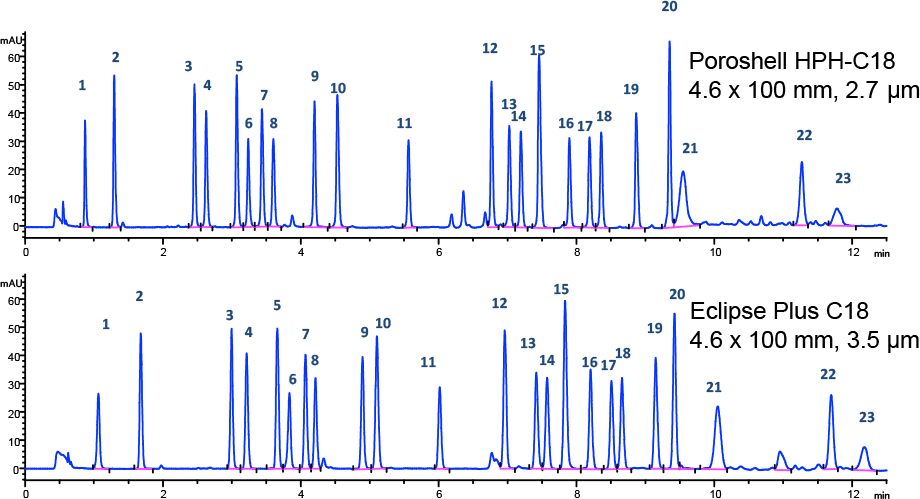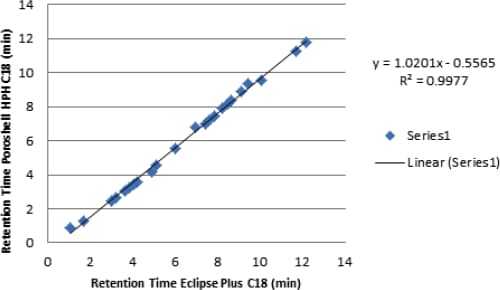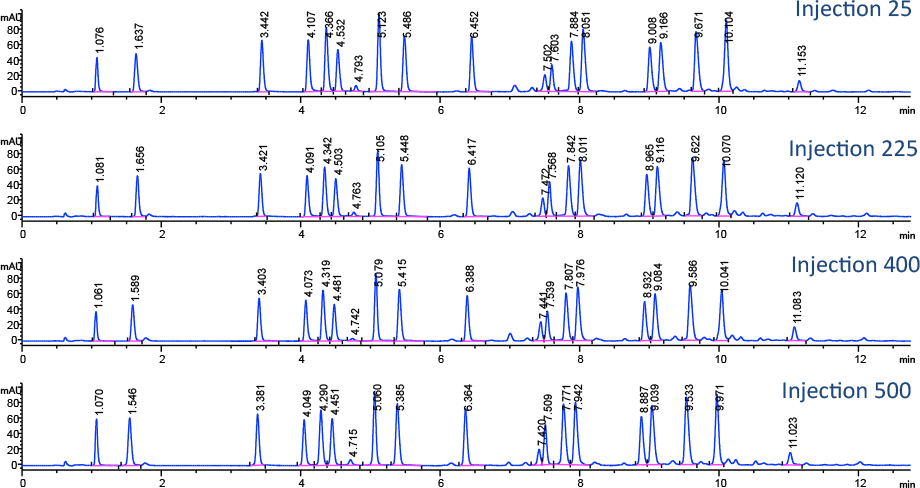Access Agilent eNewsletter July 2015
>> Update My Profile | Subscribe to Access Agilent | Article Directory
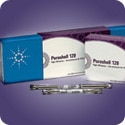
Agilent Poroshell HPH allows for easy method transfer during amino analysis at high pH
By William Long
Agilent LC Applications
Continuous improvement in HPLC columns and instrumentation presents the opportunity to improve HPLC methods. For example, a method developed for amino acids derivatized with ortho-phthalaldehyde/9-fluorenylmethyl chloroformate (OPA/FMOC), on HP 1090 Series HPLC systems, was updated for the Agilent 1100 Series. Now the method has evolved to take advantage of the Agilent 1260 Infinity Binary LC and recently released superficially porous Agilent Poroshell HPH-C18 columns – optimized for high pH analyses.
Developed on 3.5 and 1.8 µm Agilent ZORBAX Eclipse Plus C18 columns, the automated precolumn amino acid method now includes 2.7 µm Poroshell HPH-C18. This column has good lifetime and transferability to different column dimensions.
Better pH resistance to clogging
The Agilent Poroshell column family is based on superficially porous particle (SPP) technology, consisting of a solid core and a superficially porous shell. The columns are available in 2.7 and 4 µm particle sizes. For the 2.7 µm used here, the particles consist of a 1.7 µm solid core with a 0.5 µm porous shell. They provide 40 to 50% lower backpressure and 80 to 90% of the efficiency of sub-2 µm totally porous particles. Also, since the columns incorporate a 2 µm frit, they are as resistant to clogging as 3.5 and 5 µm columns. Until recently, all silica-based SPP materials had limited lifetime in higher pH buffers. To achieve longer lifetimes, we need to protect the base particle by modifying the surface or by special bonding. The surfaces of the Agilent Poroshell HPH-C18 particles are chemically modified to form an organic layer. This layer is resistant to silica dissolution in high pH conditions.
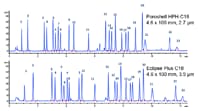 Enlarge
Enlarge
Figure 1. Using the separation of amino acid and internal standards on Agilent Poroshell HPH-C18 and ZORBAX Eclipse Plus C18 to demonstrate easy method transfer.
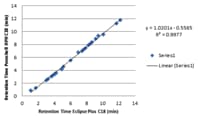 Enlarge
Enlarge
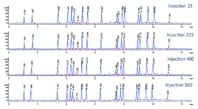 Enlarge
Enlarge
Figure 3. Column lifetime test using an Agilent Poroshell HPH-C18, 2.1 x 100 mm column running an amino acid method.
Similar separation of amino acids
In Figure 1 we see how the separations of amino acids were very similar, using the same chromatographic conditions. The elution order of the mixture on both columns was the same and the relationship of retention times of the samples was highly correlated (0.997) between the two column types (Figure 2). Retention times were slightly less on the Agilent Poroshell HPH-C18 column.
In our example, separation of leucine and lysine looks better on Agilent Poroshell HPH-C18, while separation between lysine and hydroxyproline and the sarcosine/proline pair looks worse. However, the chromatography can be altered to enhance resolution of desired peak pairs, with the method being easily scaled to different column dimensions.
Flow rates are changed geometrically with column diameter. Flow rates were 1.5 mL/min with the 4.6 x 100 mm column and 0.62 and 0.21 mL/min with the 3 and 2.1 mm columns, respectively. In all cases, the low-volume heat exchanger was used with short red tubing to minimize extra column volume. Using the Agilent 1260 Infinity Binary LC System with low dispersion heating and tubing, the column pressure was approximately 175 bar.
Better column lifetime
Column lifetime is an important consideration for chromatographers analyzing amino acid samples. Most silica columns lose efficiency after prolonged exposure to these conditions.
There are two approaches to achieving high pH stability in silica HPLC columns. One way is to employ special bonding chemistry, as in the Agilent ZORBAX Extend-C18 column. This technology uses bidentate bonding to protect the silica from dissolution. Another approach is to modify the silica itself, making it less soluble, as we have done with Agilent Poroshell HPH particles.
In our study, a single 2.1 x100 mm column was used for lifetime testing, with 500 analyses over a period of four weeks. About 100 injections were made each week using freshly opened amino acid standard mix and reagents. At the end of the sequence, the column was flushed with 100% B mobile phase for 40 min and the instrument was shut down. The method was run for 3.5 days and the column was then stored with no analysis for 3.5 days. This approach simulated typical lab practice whereby samples are run for an extended time, and then a column is washed and stored. Storing a column in 100% mobile phase B was recommended in the original amino quant methods and is common practice in many successful labs that frequently run amino acids. A realistic lifetime study showed excellent lifetime of the column over one month of use (Figure 3).
Easy transfer of existing methods
Agilent Poroshell HPH-C18 has selectivity similar to totally porous ZORBAX Eclipse Plus C18. This allows easy transfer of existing methods, such as the amino acid method. In this example, we made no change to the chromatographic conditions, although changes in the gradient could be done to improve resolution on selected amino acids.
Agilent offers a wide range of LC, HPLC, and UHPLC products and solutions
Agilent has the largest portfolio of Fast LC columns, and a broad family of phases across all particle sizes for exceptional flexibility and scalability in HPLC and UHPLC. Explore the whole family of solutions and use the Agilent LC Columns Navigator to help you find the right column for your separation.
>> Update My Profile | Subscribe to Access Agilent | Article Directory
